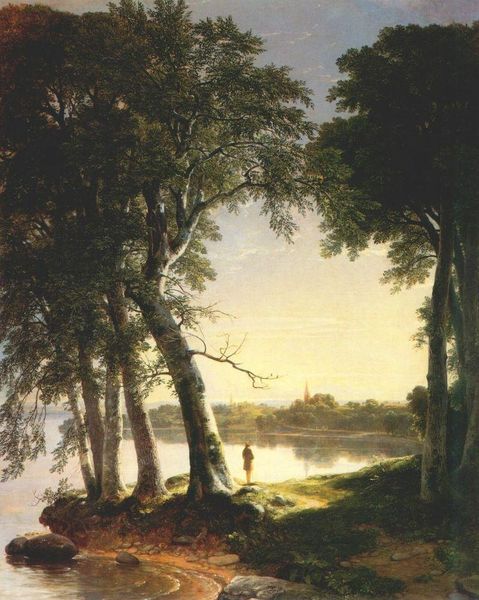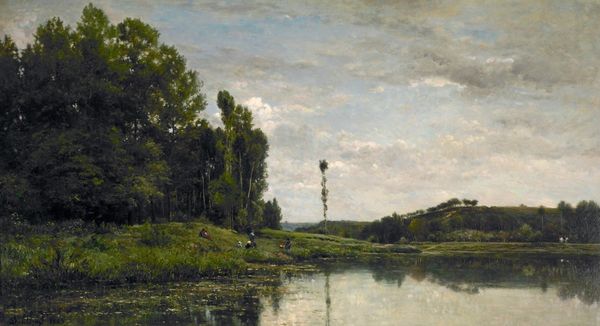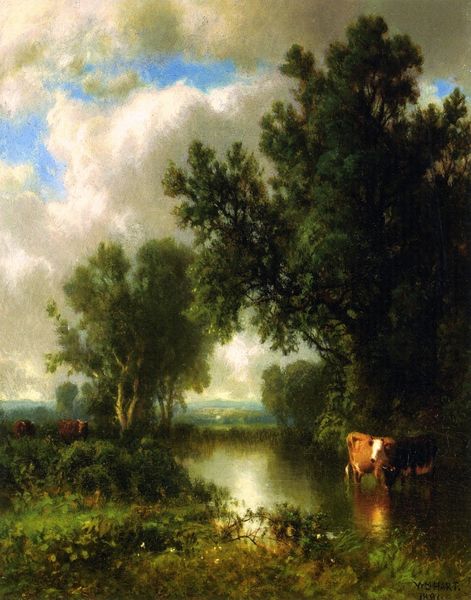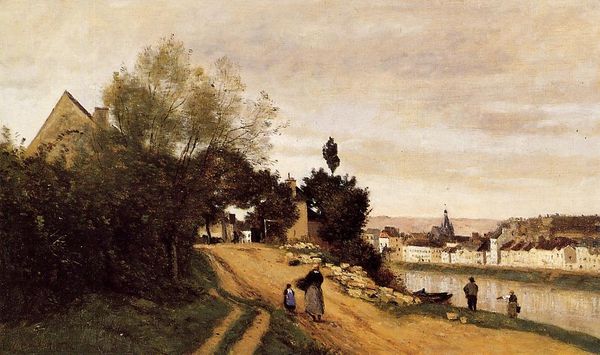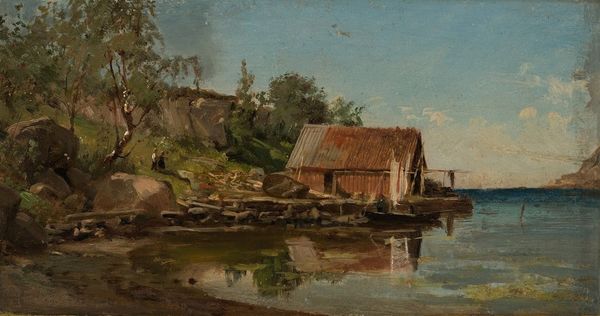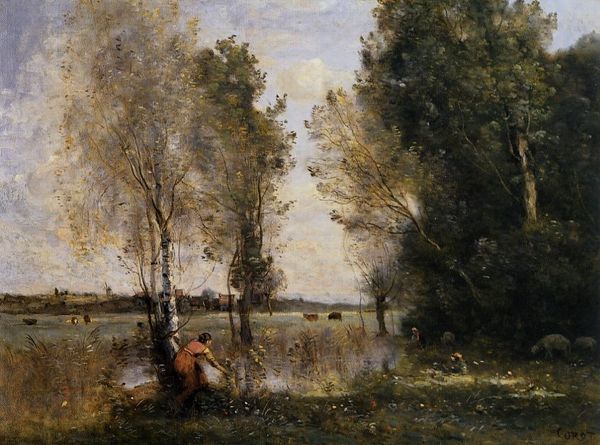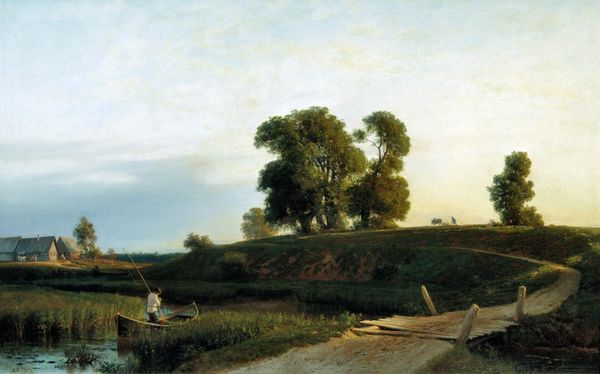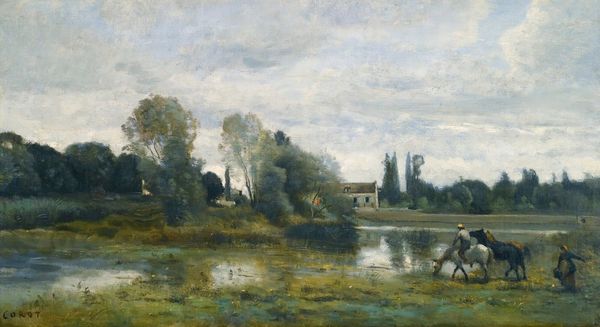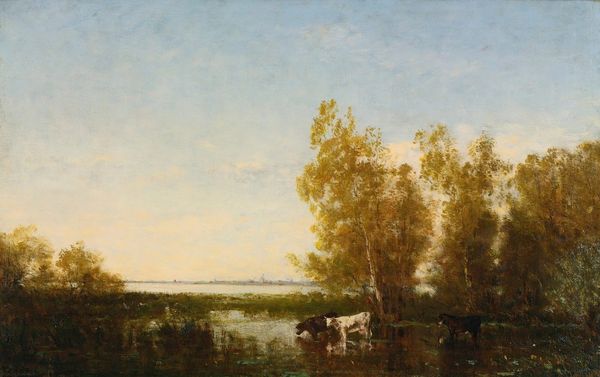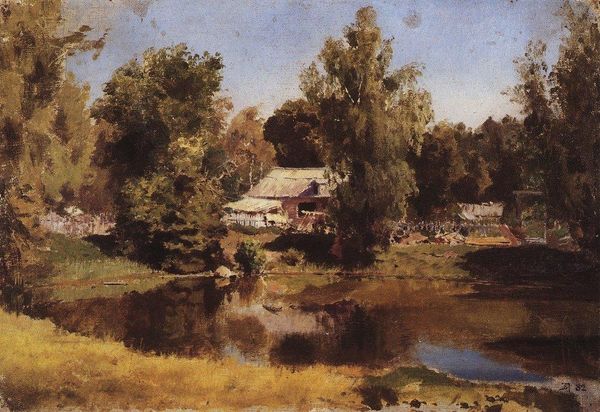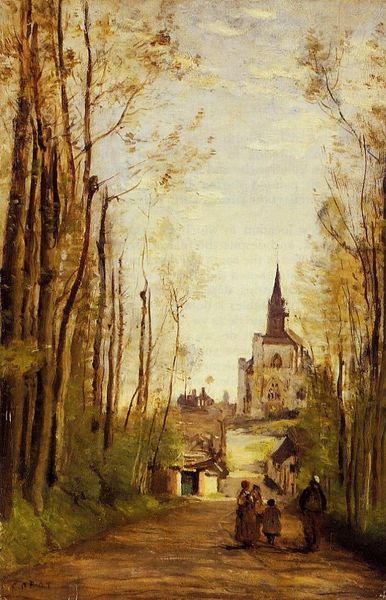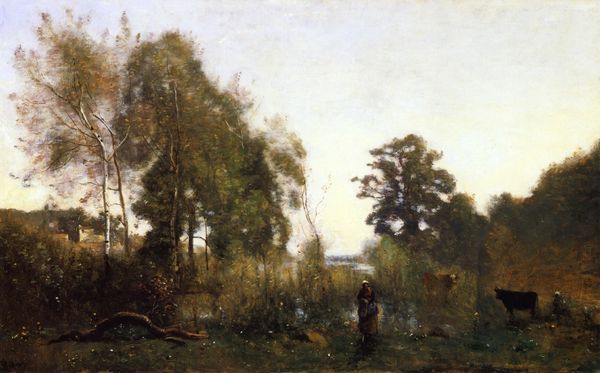
painting, oil-paint
#
painting
#
oil-paint
#
landscape
#
river
#
oil painting
#
forest
#
romanticism
#
water
#
genre-painting
#
realism
Dimensions: 53 x 42 cm
Copyright: Public domain
Editor: So, this painting is called "Near the Monastery" by Efim Volkov. It's an oil painting. The first thing that strikes me is the kind of subdued palette and the depiction of what seems to be everyday life with a lone figure carrying buckets. What are your thoughts on this work? Curator: It's fascinating to consider this "everyday life" as a product. What materials went into producing this image of labour and piety? Consider the pigments. Where did they source the raw materials, the ochres, the umbers, the whites, to create this muted yet evocative scene? Editor: I never really thought about where the pigments came from... So it wasn’t as simple as just grabbing a tube from the art store! Curator: Exactly! Each colour tells a story about trade routes, chemical processes, and the economics of artistic production. Even the canvas itself speaks of specific manufacturing techniques. Then, reflect on the labor. How long did it take Volkov to create this piece? What were the conditions he worked under? Was he commissioned, and if so, how did the patron's expectations influence the subject matter and execution? Editor: That adds a completely different dimension. It moves away from just the aesthetics to think about the actual physical creation of the artwork, almost like deconstructing it. How do the materials and Volkov’s labour position this piece in society at that time? Curator: This work speaks to the social structure through its subtle depiction of a working-class individual in communion with a religious space. The subdued colour palette, almost utilitarian in its tones, may signify Volkov’s statement on labor as a form of devotion and, indeed, devotion as labor itself. Think of the irony involved in generating labor from the depiction of labour. What do you make of the role of religion? Editor: The monastery certainly shifts the scene from being just an ordinary scene to a cultural moment, representing something deeper. It encourages you to appreciate not only what you’re looking at, but how it came to be made. Curator: Precisely. Understanding these elements lets us see the artwork less as a simple landscape, and more as a record of material practices and the social relations that underpinned them.
Comments
No comments
Be the first to comment and join the conversation on the ultimate creative platform.
